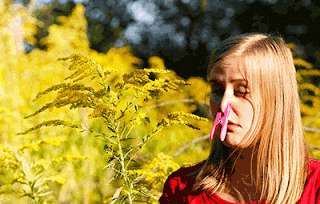Pollen allergies or as it is better known, Hay Fever, are directly related to things in our environment.
The best way to battle pollen allergies is to find out which pollens you are allergic to. An allergist is able to easily test you for various types of trees, weeds, and grasses, and provide you with a list of pollens that negatively affect your body.
Below are a few types of plants that are known to cause pollen allergies:
Trees: Birch, Alder, Cedar, Hazelnut, Willow, Plane, Olive and Hornbeam Grasses: Ryegrass & Timothy Weeds: Ragweed, Nettle, Mugwort, Goosefoot abd Sorrel.
Depending on where you live, your individual sensitivity may differ dramatically. If a person lives in an area that has hot, dry, windy days, then there is more of a chance that pollen is in the air. Whereas if you live in areas where the air is cool or there are more rainy days, the pollen is washed to the ground and is less likely to affect you.
Tune into your local weather channel or get online to find out the days pollen count. Allergy pollen counts allow you to see how you could be affected right in your own hometown. On days when the count is high you don’t have to suffer from pollen allergies or hay fever, which has nothing to do with hay.
